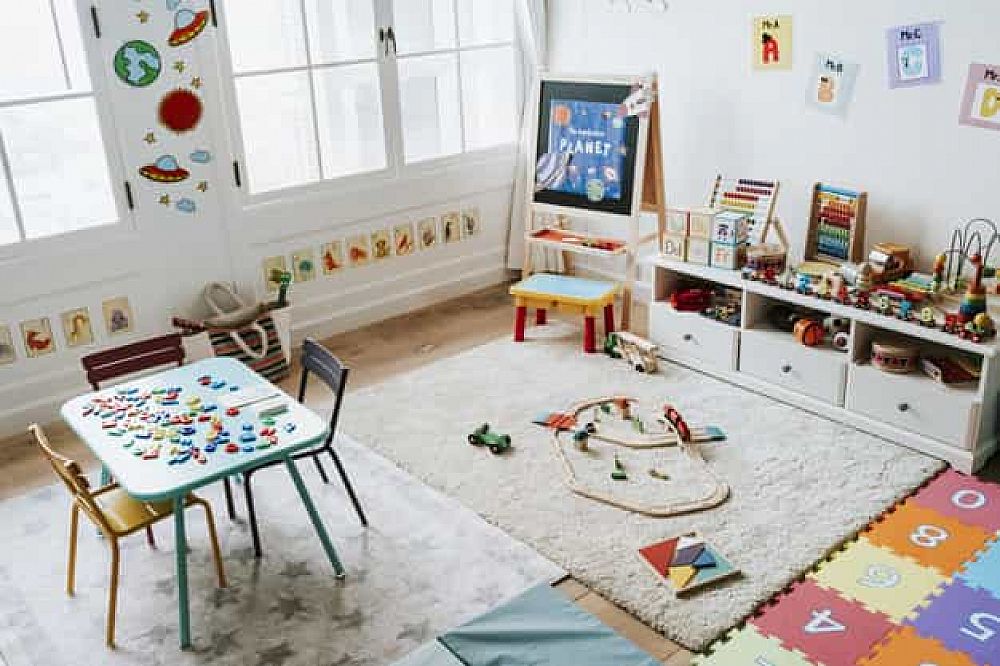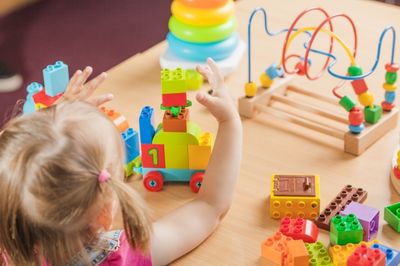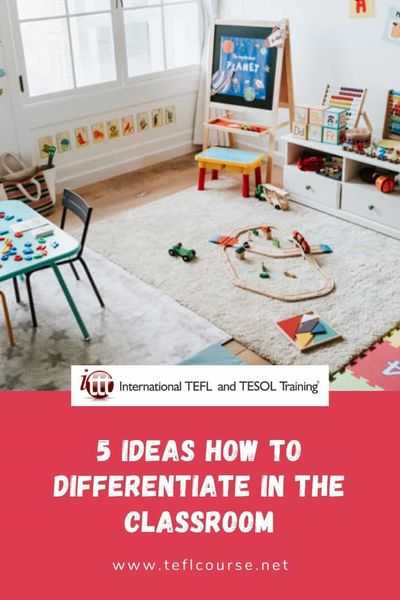5 Ideas How to Differentiate in The Classroom

Every person is unique and every person learns in different ways. Identifying how each individual learns might sound like a challenging task to perform as a teacher. However, there are several tests that institutions and teachers can provide to students in order to identify the different types of learners they have in their classrooms. It is the theory of Multiple Intelligences by Howard Gardner that shows how people have a variety in ways of learning. Some tests have been designed based on his theory and can be found online. Some of the Multiple Intelligences mentioned by Gardner include, but are not limited to Visual-Spatial, Linguistic-Verbal, Musical, Bodily-kinesthetic and Naturalistic. Through identifying the different types of learners, teachers should be able to design better lesson plans and organize differentiated activities in class in order to reach the various types of learners they might have in the classroom.
Table of Contents
Do you want to teach English abroad?
This post was written by our TEFL certification graduate Brisa F. Please note that this blog post might not necessarily represent the beliefs or opinions of ITTT.
Ways of Acquiring Knowledge
The following is a brief description of how these types of learners acquire their knowledge:
- Visual-Spatial learners, learn more through images, graphs, reading maps and using videos.
- Linguistic-Verbal learners, learn by using words; it could be using crosswords, giving speeches or even performing.
- Musical learners, learn more through music, singing, humming or with the rhythm of songs.
- Bodily-kinesthetic learners, like to learn through actions, could be acting or moving their body.
- Naturalistic learners learn by being in contact with nature, it could be interacting with nature or observing nature. The environment is important for them.
When planning lessons, teachers should take into account the multiple intelligences, considering that students learn in different ways. This task, as previously mentioned, might not be easy and it might be more difficult to design a lesson plan that is appropriate for all types of learners. However, teachers could design a variety of activities to reach different learners and accomplish the main objective of the lesson at the same time.

Also Read: What's the best way to apply for a TEFL job?
Ideas on Designing a Lesson
Here are some ideas to create differentiated lessons not only for the ELL class but also for other subjects. For instance, teachers could create centers in the classroom and divide the class into groups. Students could rotate from center to center and spend a limited period of time in each of the centers. For example, teachers could create 3 to 5 centers according to the number of students and the size of the classroom. The objective of each center is to help learners to acquire knowledge according to their type of intelligence.
One of the centers could be designed for Musical Intelligence; in this center, students would listen to a song and complete the lyrics. Using new technology, students could record themselves and practice the songs. This activity will help students who are more musical, and at the same time, it will help them to work on their listening skills in the language they are learning.
Another center could have pictures. In this center, students could describe the objects they see in the image by using adjectives or describe the images to review prepositions. This activity will help the students who are more visual, particularly when writing or verbally describing the image to their peers. It is through the use of this activity that students would be working on their vocabulary, grammar-structure, and writing.

Also Read: General Thoughts on Lesson Planning
A third center could consist of worksheets where students have to fill in the blank. Additionally, students could look for words in a word search. This activity would help students to practice their vocabulary, or increase and develop on their vocabulary. This center is for Linguistic-verbal learners.
Bodily-Kinesthetic students could play "Simon says". Let's say students are learning the parts of the body, the teacher or one of their peers can lead the activity and students review vocabulary and identifying body parts, including movements. This type of activity can be done with the entire group depending on the number of students.
For naturalistic learners, the teacher could design a walk through the school or institution labeling or pointing out objects. At the same time, students could describe the objects they see or draw a picture of the elements they see in their walk. With this type of activity, the teacher will be working on grammar, vocabulary, and pronunciation. This type of activity will break the routine of the classroom and motivate students.

Do you want to teach English abroad?
In brief, it is possible to reach the different types of learners through a variety of activities in the classroom. Designing activities that reach all types of learners break the traditional way of teaching, motivates students to learn, and reaches different types of learners to achieve positive results. It is for these reasons that teachers should include variety in the lesson plans.
Apply now & get certified to teach english abroad!
Speak with an ITTT advisor today to put together your personal plan for teaching English abroad!
Send us an email or call us toll-free at 1-800-490-0531 to speak with an ITTT advisor today.
Related Articles:
- How do I get a job teaching English in South Korea
- 10 Questions You Need to Ask Before Enrolling In a TEFL Course
- The 10 Best Destinations for Teaching English Abroad in 2018
- Online or In-Class - Which TEFL Course Should You Take?
- The Best Government Programs For Teaching English Abroad
- What Scams to Look Out for When Looking for TEFL Jobs
Listen to this blog post:




